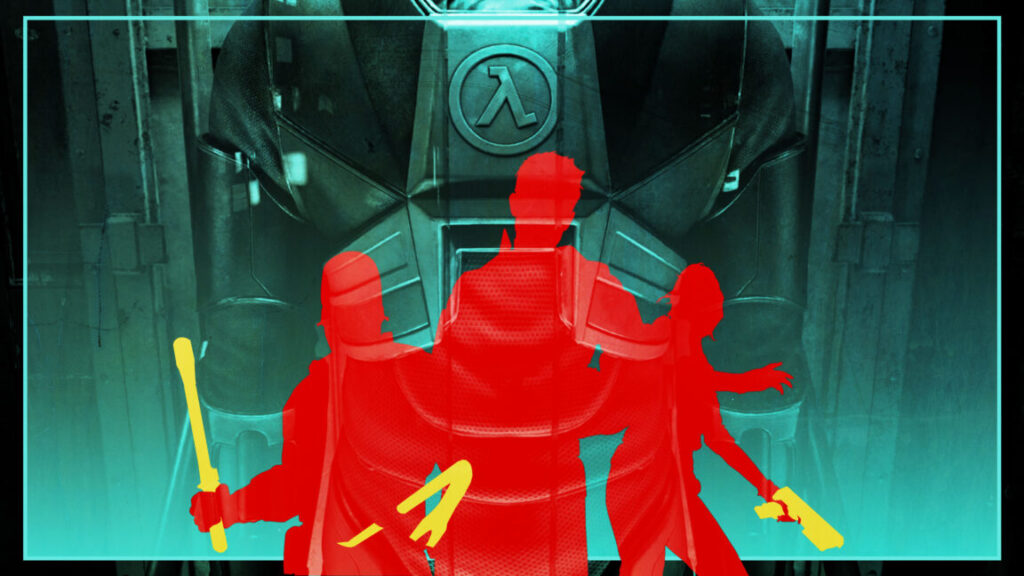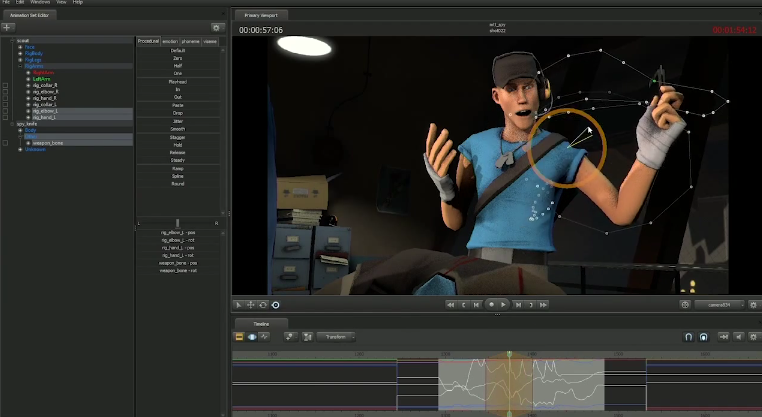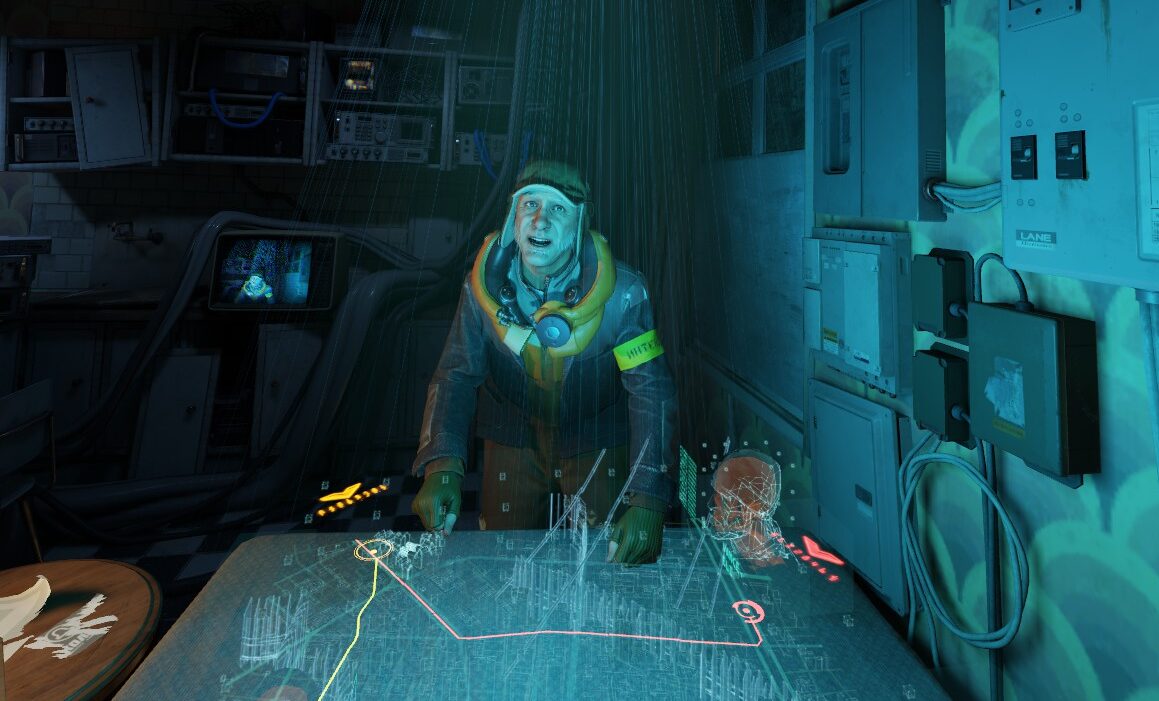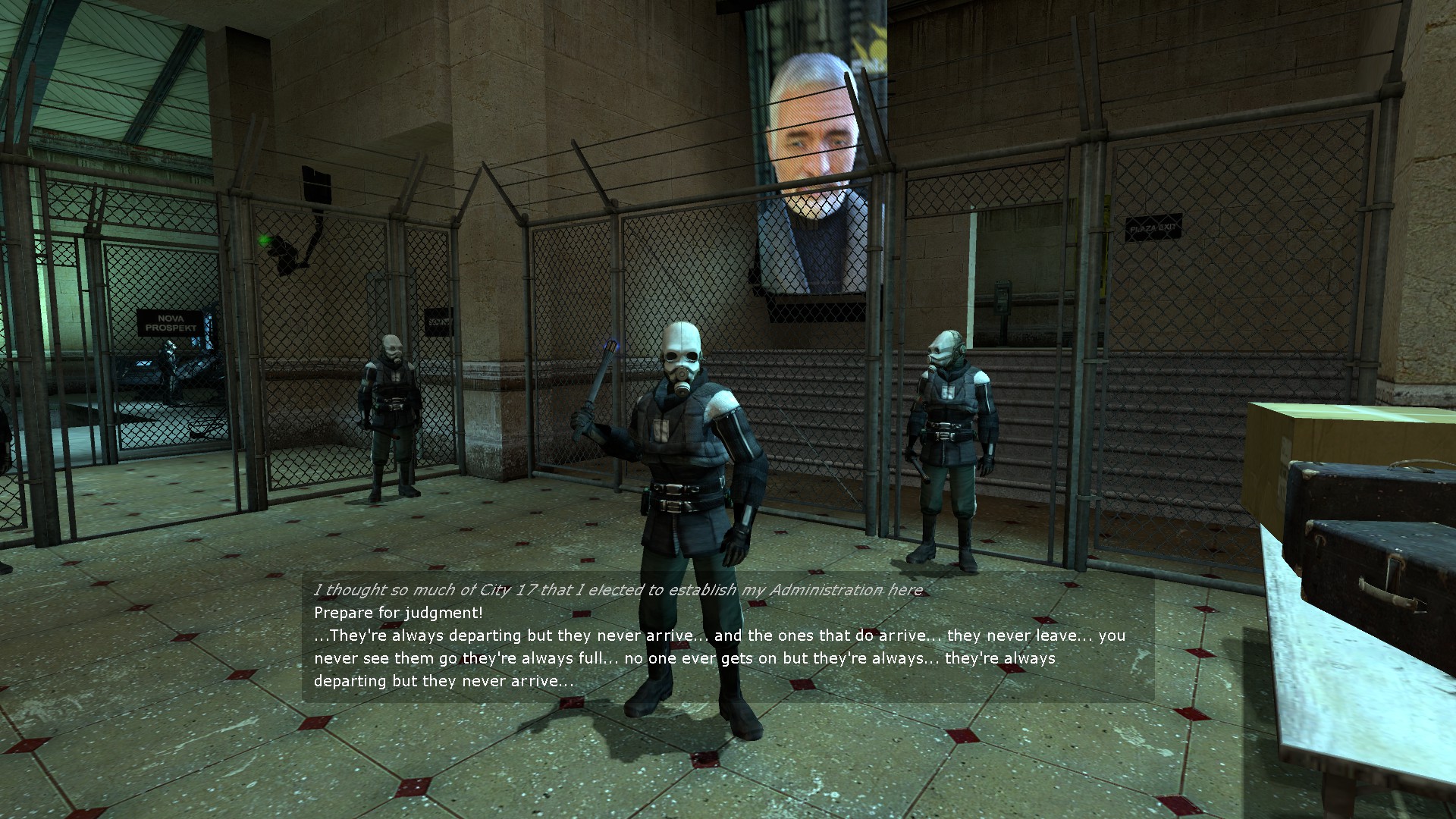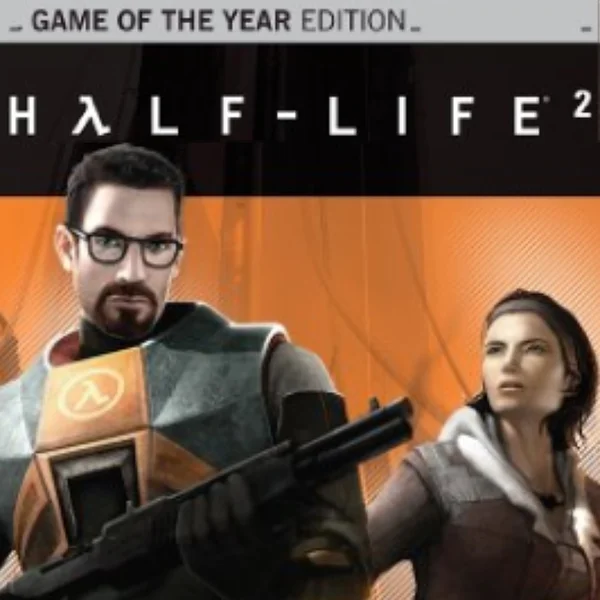These are the lasting things that Half-Life 2 gave us, besides headcrabs and crowbars
Beyond the game itself (which rocks), Half-Life 2 had a big impact on PC gaming.
This article is part of our 20th anniversary of Half-Life 2 series. Credit: Aurich Lawson
It’s Half-Life 2 week at Ars Technica! This Saturday, November 16, is the 20th anniversary of the release of Half-Life 2—a game of historical importance for the artistic medium and technology of computer games. Each day up through the 16th, we’ll be running a new article looking back at the game and its impact.
“Well, I just hate the idea that our games might waste people’s time. Why spend four years of your life building something that isn’t innovative and is basically pointless?”
Valve software founder Gabe Newell is quoted by Geoff Keighley—yes, the Game Awards guy, back then a GameSpot writer—as saying this in June 1999, six months after the original Half-Life launched. Newell gave his team no real budget or deadline, only the assignment to “follow up the best PC game of all time” and redefine the genre.
When Half-Life 2 arrived in November 2004, the Collector’s Edition contained about 2.6GB of files. The game, however, contained so many things that would seem brand new in gaming, or just brave, that it’s hard to even list them.
Except I’m going to try that right here. Some will be hard to pin definitively in time to Half-Life 2 (HL2). But like many great games, HL2 refined existing ideas, borrowed others, and had a few of its own to show off.
Note that some aspects of the game itself, its status as Steam’s big push title, and what it’s like to play it today, are covered by other writers during Ars’ multi-day celebration of the game’s 20th anniversary. That includes the Gravity Gun.
How many film and gaming careers were launched by people learning how to make the Scout do something goofy? Credit: Valve
The Source Engine
It’s hard to imagine another game developer building an engine with such a forward-thinking mission as Source. Rather than just build the thing that runs their next game, Valve crafted Source to be modular, such that its core could be continually improved (and shipped out over Steam), and newer technologies could be optionally ported into games both new and old, while not breaking any older titles working perfectly fine.
Source started development during the late stages of the original Half-Life, but its impact goes far beyond the series. Team Fortress 2, Counter-Strike: Global Offensive, Portal 1/2, and Left 4 Dead, from Valve alone, take up multiple slots on lists of the all-time best games. The Stanley Parable, Vampire: The Masquerade—Bloodlines, and a whole lot of other games used Source, too. Countless future game developers, level designers, and mod makers cut their teeth on the very open and freely available Source code tools.
And then, of course, where would we be as a society were it not for Source Filmmaker and Garry’s Mod, without which we would never have Save as .dmx and Skibidi Toilet.
Half-Life: Alyx is a technical marvel of the VR age, but it’s pulled along by the emotional bonds of Alyx and Russell, and the quest to save Eli Vance.
Credit: Valve
Half-Life: Alyx is a technical marvel of the VR age, but it’s pulled along by the emotional bonds of Alyx and Russell, and the quest to save Eli Vance. Credit: Valve
A shooter with family dynamics
Novelist Marc Laidlaw has made it clear, multiple times, that he did not truly create the Half-Life story when he joined Valve; it was “all there when I got there, in embryo,” he told Rock Paper Shotgun. Laidlaw helped the developers tell their story through level design and wrote short, funny, unnerving dialogue.
For Half-Life 2, Laidlaw and the devs were tasked with creating some honest-to-goodness characters, something you didn’t get very often in first-person shooters (they were all dead in 1994’s System Shock). So in walked that father/daughter team of Eli and Alyx Vance, and the extended Black Mesa family, including folks like Dr. Kleiner.
These real and makeshift family members gave the mute protagonist Gordon Freeman stakes in wanting to fix the future. And Laidlaw’s “basic dramatic unit” set a precedent for lots of shooty-yet-soft-hearted games down the road: Mass Effect, The Last of Us, Gears of War, Red Dead Redemption, and far more.
Remember when a Boston-area medical manufacturing firm, run by a Half-Life fan, got everyone thinking a sequel was coming? Fun times. Credit: Black Mesa
Intense speculation about what Valve is actually doing
Another unique thing Laidlaw helped develop in PC gaming: intense grief and longing for a sequel that both does and does not exist, channeled through endless speculation about Valve’s processes and general radio silence.
Half-Life 2 got “Episodes” but never a true numbered Half-Life 3 sequel. The likelihood of 3 took a hit when Laidlaw unexpectedly announced his retirement in January 2016. Then it got even less likely, or maybe just sad, when Laidlaw posted a barely disguised “snapshot of a dream” of “Epistle 3” to his blog (since deleted and later transposed on Pastebin).
Laidlaw has expressed regret about this move. Fans have expressed regret that Half-Life 3 somehow seems even less likely, having seen Valve’s premiere writer post such a seemingly despondent bit of primary source fan fiction.
“Fans of popular game eager for sequel” isn’t itself a unique thing, but it is for Half-Life 3’s quantum existence. Valve published its new employee handbook from around 2012 on the web, and in it, you can read about the company’s boldly flat structure. To summarize greatly: Projects only get started if someone can get enough fellow employees to wheel their desks over and work on it with them. The company doesn’t take canceled or stalled games to heart; in its handbook, it’s almost celebrated that it killed Prospero as one of its first major decisions.
So the fact that Half-Life 3 exists only as something that hasn’t been formally canceled is uniquely frustrating. HL2’s last (chronological) chapter left off on a global-scale cliffhanger, and the only reason a sequel doesn’t exist is because too many other things are more appealing than developing a new first-person shooter. If you worked at Valve, you tell yourself, maybe you could change this! Maybe.
What, you’re telling me now it’s illegal to break in, take source code, and then ask for a job? This is a police state! Credit: Valve
Source code leak drama
The Wikipedia pages “List of commercial video games with available source code” and its cousin “Later released source code” show that, up until 2003, most of the notable games whose source code became publicly available were either altruistic efforts at preservation or, for some reason, accidental inclusions of source code on demos or in dummy files on the game disc.
And then, in late 2003, Valve and Half-Life superfan Axel Gembe hacked into Valve’s servers, grabbed the Half-Life 2 source code that existed at the time and posted it to the web. It not only showed off parts of the game Valve wanted to keep under wraps, but it showed just how far behind the game’s development was relative to the release date that had blown by weeks earlier. Valve’s response was typically atypical: they acknowledged the source code as real, asked their biggest fans for help, and then released the game a year later, to critical and commercial success.
The leak further ensconced Valve as a different kind of company, one with a particularly dedicated fanbase. It also seems to have taught companies a lesson about hardening their servers and development environments. Early builds of games still leak—witness Space Marine 2 this past July—but full source code leaks, coming from network intrusions, are something you don’t see quite so often.
Pre-loading a game before release
It would be hard to go back in time and tell our pre-broadband selves about pre-loading. You download entire games, over the Internet, and then they’re ready to play one second after the release time—no store lines, no drive back home, no stuffed servers or crashed discs. It seems like a remarkable bit of trust, though it’s really just a way to lessen server load on release day.
It’s hard to pin down which game first offered pre-loading in the modern sense, but HL2, being a major launch title for Valve’s Steam service and a title with heavy demand, definitely popularized the concept.
Always-online for single-player games
Here’s one way that Half-Life 2 moved the industry forward that some folks might want to move back.
Technically, you can play HL2 without an Internet connection, and maybe for long periods of time. But for most people, playing HL2 without a persistent net connection involves activating the game on Steam, letting it fully update, and then turning on Steam’s “Offline Mode” to play it. There’s no time limit, but you need to keep Steam active while playing.
It’s not so much the particular connection demands of HL2 that make it notable, but the pathway that it, and Steam, created on which other companies moved ahead, treating gaming as something that, by default, happens with at least a connection, and preferably a persistent one.
It’s Game of the Year. Which year? Most of them, really (until Disco Elysium shows up). Credit: Valve
A place on “All-time” video game rankings forever
Half-Life 2 introduced many ground-breaking things at once—deep facial animations and expressions, an accessible physics engine, a compelling global-scale but family-minded story—while also being tremendously enjoyable game to play through. This has made it hard for anyone to suggest another game to go above it on any “All-time greatest games” list, especially those with a PC focus.
Not that they don’t try. PC Gamer has HL2 at 7 out of 100, mostly because it has lost an understandable amount of “Hotness” in 20 years. IGN has it at No. 9 (while its descendant Portal 2 takes third place). Metacritic, however fallible, slots it in universal second place for PC games.
So give Half-Life 2 even more credit for fostering innovation in the “arbitrary ranked list of games” genre. Rock Paper Shotgun’s top 100 is cited as the best “to play on PC today,” as they have “paid no mind to what was important or influential.” And yet, Half-Life 2, as a game you can play in 2024, is still on that list. It’s really something, that game.
These are the lasting things that Half-Life 2 gave us, besides headcrabs and crowbars Read More »
